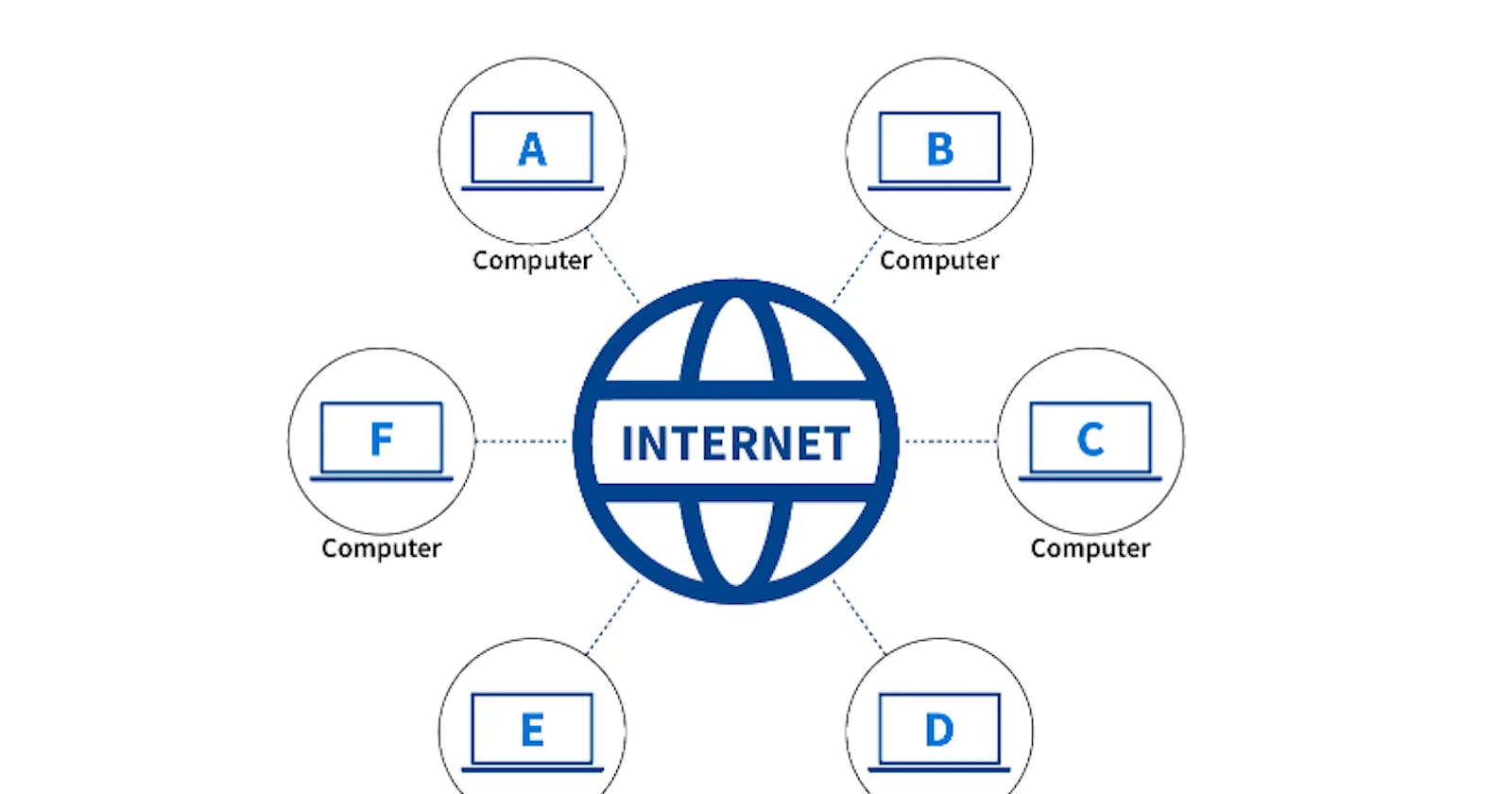As a front-end web developer, your primary focus may be on creating visually appealing and user-friendly websites. However, having a solid understanding of how the Internet works goes beyond just designing interfaces. It empowers you to optimize performance, troubleshoot issues, and create seamless user experiences. And so understanding how the internet works💡 is essential for a front-end developer.
To start with in this blog post, I will try to explain the basics of the internet and how it connects billions of devices and people around the globe.🌐
The internet is a network of networks. It is made up of millions of computers, servers, routers, switches, cables, satellites, and other devices that communicate with each other using a common set of rules called protocols. These protocols define how data is formatted, transmitted, and received over the internet.
One of the most important protocols is the Internet Protocol (IP), which assigns a unique address to every device on the Internet. This address is called an IP address and it looks like a series of numbers separated by dots, such as 192.168.1.1. IP addresses allow devices to locate and identify each other on the internet.
Another important protocol is the Transmission Control Protocol (TCP), which ensures that data is sent and received reliably and in order. TCP divides data into smaller units called packets, which are then sent over the internet from one device to another. Each packet has a header that contains information such as the source and destination IP addresses, the sequence number, and the checksum. The checksum is a way of verifying that the packet has not been corrupted or altered during transmission. TCP also checks if packets are lost or duplicated and requests a retransmission if necessary.
Together, IP and TCP form the TCP/IP protocol suite, which is the foundation of the Internet. Many other protocols work on top of TCP/IP to provide different services and functions on the Internet. For example, the HyperText Transfer Protocol (HTTP) is used to transfer web pages from servers to browsers, the Simple Mail Transfer Protocol (SMTP) is used to send and receive emails, and the Domain Name System (DNS) is used to translate domain names like www.google.com into IP addresses.
The Internet is not controlled by any single entity or organization. It is a decentralized system that relies on cooperation and collaboration among various stakeholders, such as Internet service providers (ISPs), network operators, content providers, governments, and users. The internet is also constantly evolving and expanding as new technologies, standards, and applications emerge.
The internet has revolutionized many aspects of our lives, such as communication, education, entertainment, commerce, and social interaction. It has also created new challenges and opportunities for security, privacy, ethics, and governance. The internet is a powerful tool that can be used for good or evil, depending on how we use it. Remember, the Internet is not just a network of computers; it's a gateway to limitless possibilities and a catalyst for innovation in our digital age.
I hope this blog post has given you a basic understanding of how the internet works. If you want to learn more about the internet, you can check out some of these resources📚:
"How the Internet Works" by W3C - w3.org/wiki/How_does_the_Internet_work
"Internet Society - Understanding the Internet: A Glimpse into the Building Blocks, Applications, Security, and Governance of Today’s Internet" - internetsociety.org/resources/doc/2017/unde..
"How Does the Internet Work?" by Cisco - cisco.com/c/en/us/about/press/internet-prot..
If you are interested in learning more about front-end web development topics, stay tuned for my next posts where I will dive deeper into each of the skills and technologies required. Thank you for reading!😊
